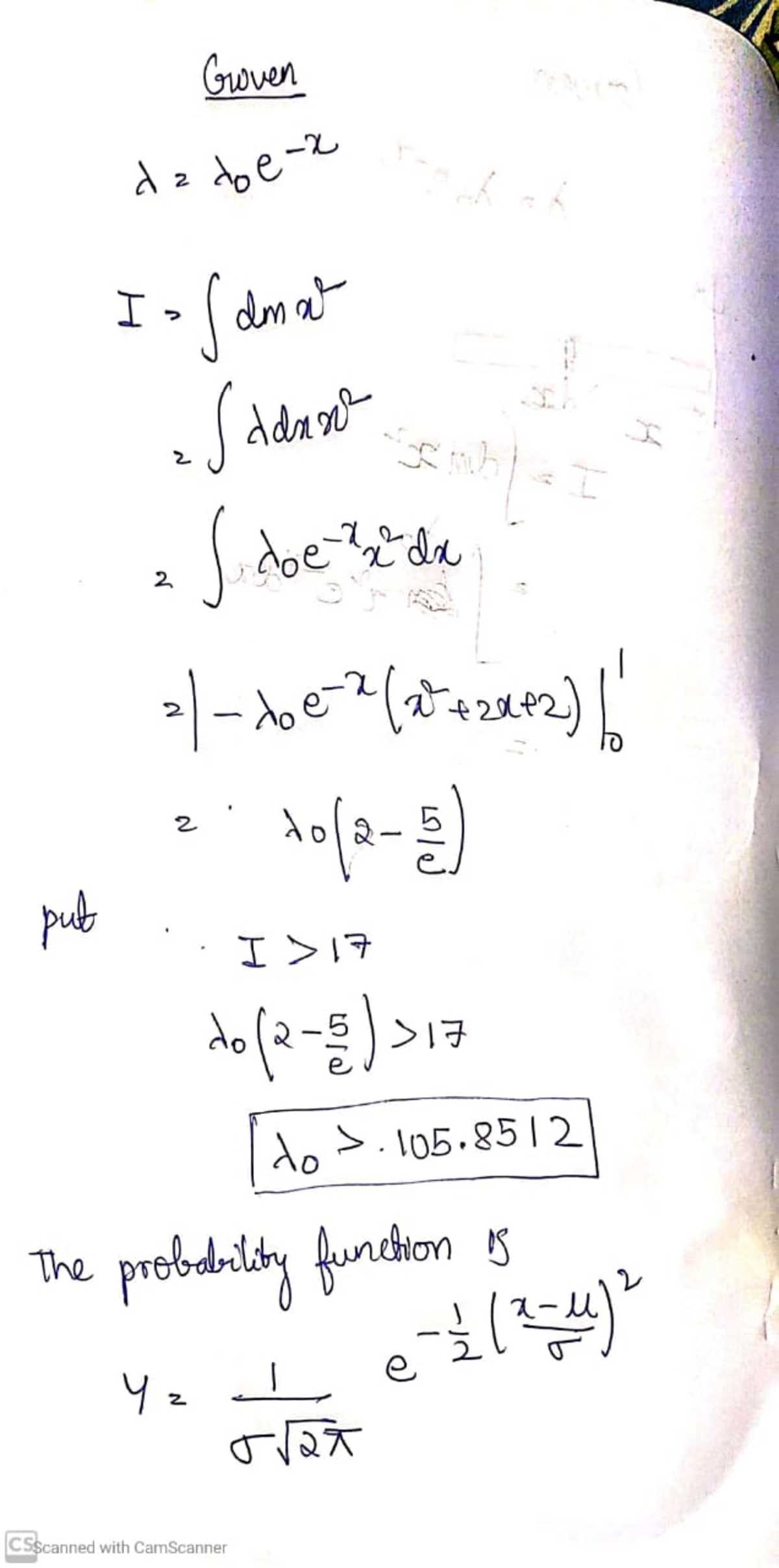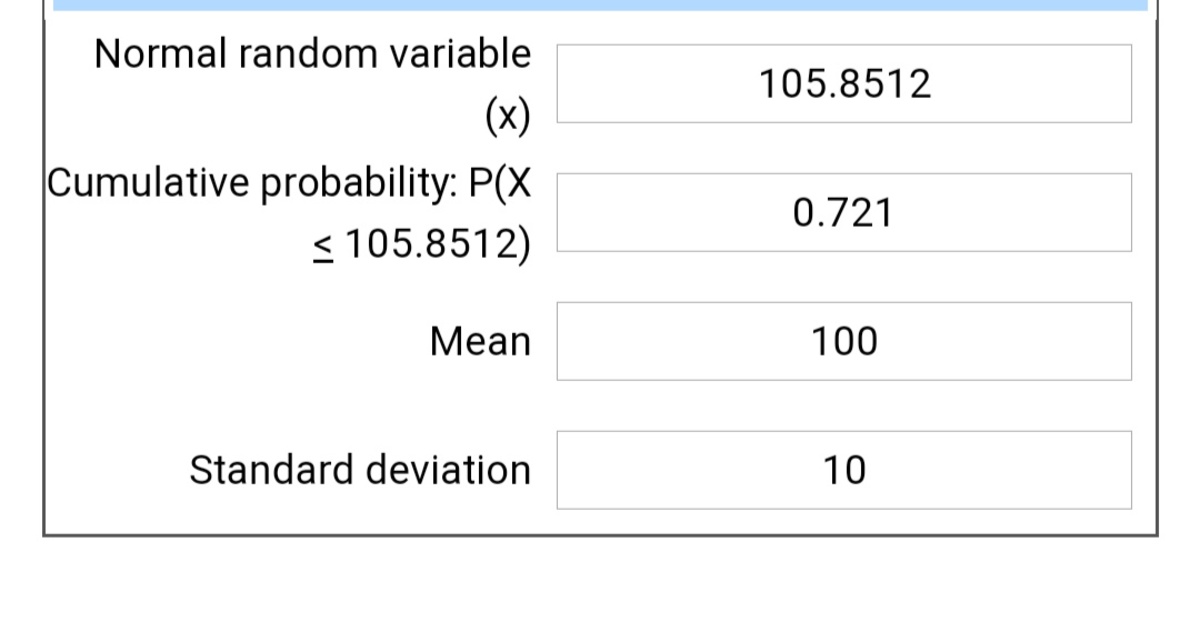Uncertain Mechanics - 1
Consider a rigid rod, one end of which is hinged at the origin and is placed along the positive X-axis. The rod is capable of rotating about the Z-axis and has a length L = 1 and a mass per unit length λ ( x )
λ ( x ) = λ o e − x
It so happens that the parameter λ o has a value which is not exactly known. It is only known that the parameter is normally distributed such that its expected value is μ = 1 0 0 and its standard deviation is σ = 1 0 . Compute the probability that the moment of inertia of the rod about the Z-axis is greater than 1 7 .
Note:
- e ≈ 2 . 7 1 8 is the Euler's number
The answer is 0.2792.
This section requires Javascript.
You are seeing this because something didn't load right. We suggest you, (a) try
refreshing the page, (b) enabling javascript if it is disabled on your browser and,
finally, (c)
loading the
non-javascript version of this page
. We're sorry about the hassle.
1 solution
Thanks for the solution. Calculating the probability boils down to solving the following exponential integral:
P ( I > 1 7 ) = 2 π σ 1 1 ∫ 1 7 ∞ e − 2 σ 1 2 ( I − μ 1 ) 2 d I
σ 1 = ( 2 − e 5 ) σ μ 1 = ( 2 − e 5 ) μ
Log in to reply
I suppose it is √2π than 2π
Log in to reply
Yes it is; nice catch. Thanks for pointing it out.
To be honest i dont know much about probability and statistics so i have used normal distribution function probability calculator
 as probability less than 105.8512 is 0.721 so greater than 105.8512 is 0.279
as probability less than 105.8512 is 0.721 so greater than 105.8512 is 0.279